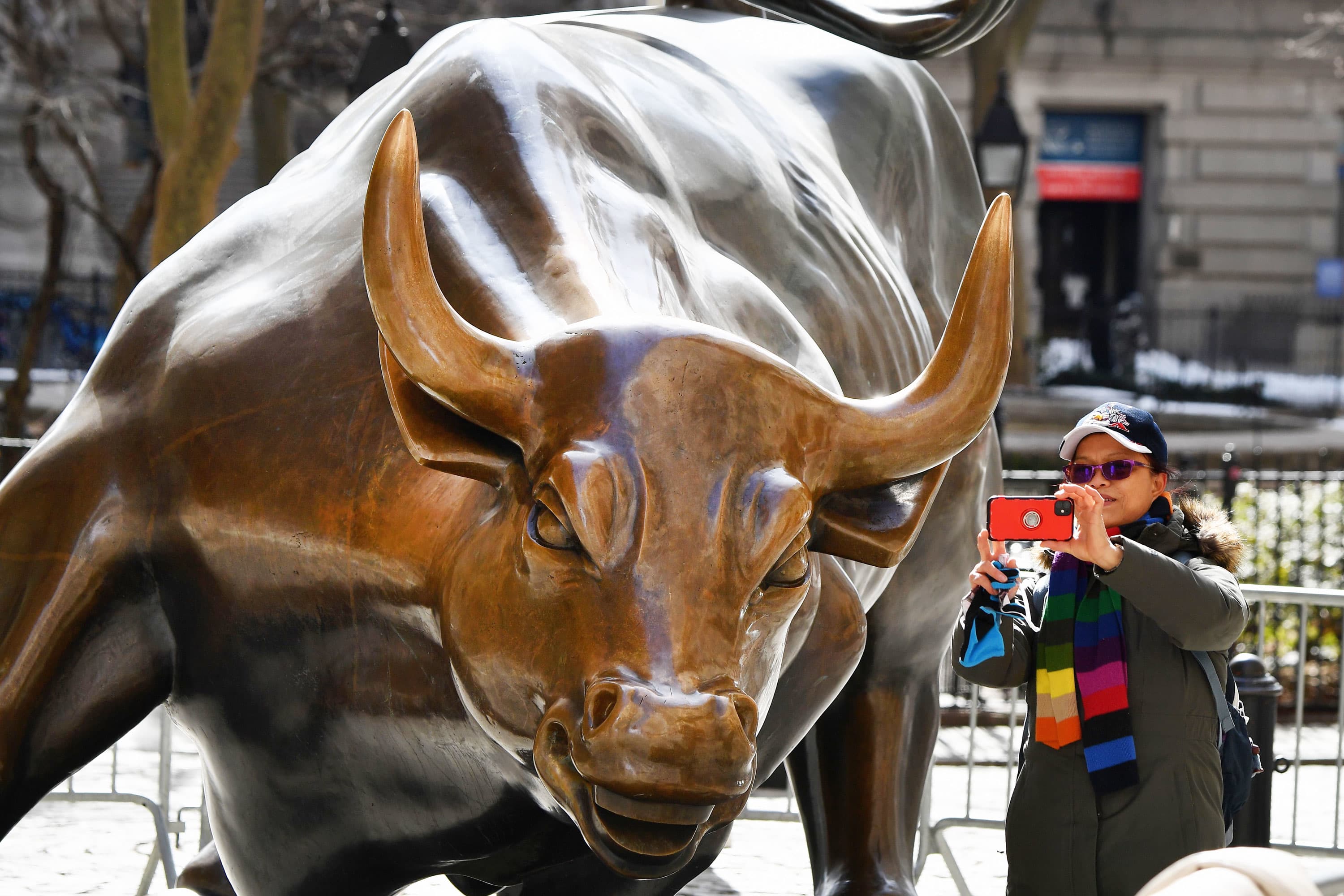Despite SPAC woes, record-breaking run of money into IPOs may continue

A woman takes a selfie with the ‘Charging Bull’ statue on February 17, 2021 in New York City.
ANGELA WEISS | AFP | Getty Images
Venture capital is off to a sizzling start in 2021, though the market has hit some bumps lately that could be signaling a shifting landscape ahead.
Early-year numbers have been eye-popping so far, with a record of $1 billion “unicorn” companies coming to market, as well as a surge in initial public offers overall and blank-check SPACs that have lured in huge chunks of investor cash.
Special purpose acquisition companies raise capital in an initial public offering and use the proceeds to snap up a private company and take it public.
“There’s seems to be an endless supply of capital looking for a home,” said Conor Moore, national leader of KPMG Private Enterprise, a global professional services advisory.
Money is flowing “particularly to late-stage investment in companies that are either going to continue to exponentially grow in a post-pandemic world, or at least continue the growth they’ve had for the last 12 months,” he said.
A report KPMG released Wednesday shed light on just how much money is flowing around.
In the first quarter, the U.S. saw births of a record 64 unicorns, or private companies that had accumulated a $1 billion valuation. That group alone accounted for about 40% of all venture capital funding from January through March.
There also were 328 SPACs during the period – companies that went public and pulled in money from investors without having a specific direction on where it would be spent.
Traditional IPOs also soared, part of $69 billion in venture capital money spread across 3,042 deals. There were nine $1 billion deals globally, also a new record.
Looking into the future
The big question is where such a blistering pace can continue. April has seen a precipitous drop-off in SPACs particularly, raising concerns that the fear-of-missing-out influx of cash could be petering out.
Moore said he’s mostly optimistic about the landscape ahead, though he does see some changes coming.
For one, Moore said those trying to take companies public are realizing that it’s harder than it looks and will need patience. He also sees potential regulatory roadblocks and said valuations in some parts of the capital markets are becoming stretched.
“There will be companies and verticals that will continue to do very well,” he said. “There are some valuations that under most rational methodologies don’t make sense.”
Sectors he expects to do well when it comes to attracting speculative investor cash include life sciences and health technology as the economy continues its Covid-era recovery. Companies that capitalize on certain work-from-home trends also are well-positioned, while gyms, urban restaurants and delivery companies could struggle amid the new landscape.
He does expect the precipitous decline in SPAC activity for April to be short-lived, though there are some factors working against the so-called blank-check companies.
Money flowing in
Companies that “are light on revenue and heavy on projections” could come under more scrutiny both from the public and regulators, said Scott Denne of 451 Research, part of S&P Global Market Intelligence.
For instance, about one-third of tech vendors acquired by SPACs this year see revenue growth of less than 15% in 2021, Denne pointed out. That is in direct contrast to the trend in 2020, when SPACs were one of the most exciting investing trends.
However, there was no SPAC issuance last week nor any so far this week, as performance has lagged considerably from its run last year.
“Given the collapse in performance since late February, it’s no surprise the register has stopped ringing,”
Bespoke Investment Group said in a note. The worst-performing SPAC stocks are down 58% since the February peak, Bespoke added.
Still, with fiscal and monetary stimulus continuing to pour into the markets and investors plowing money into equity-related assets at record pace, it’s probably too early to write off IPOs and SPACs.
“The whole issue of bubbles has not been a broad bubble, but pockets of bubbles, pockets of enthusiasm that certainly have been focused on SPACs,” said Quincy Krosby, chief market strategist at Prudential Financial.
“Money is still going to go in as long as they believe they’re going to have returns, and that’s why we’re looking into the second quarter,” she added.
Companies “want to be able to list as quickly as possible, taking advantage of financial conditions still being liquid. That’s important for the IPO market,” Krosby said.
Become a smarter investor with CNBC Pro.
Get stock picks, analyst calls, exclusive interviews and access to CNBC TV.
Sign up to start a free trial today.




